- Unit18 Jan 2012
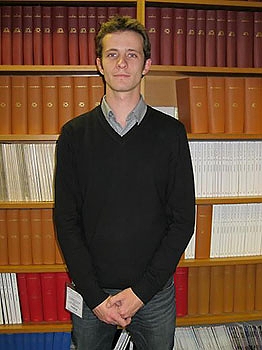
Michaël Bazelot started his Neurophysiology studies in the University of Toulouse at the Center for Animal Cognition (CRCA). He characterized the GABAergic transmission in honeybee antennal lobe cells culture with patch clamp recordings. He then did his PhD at the Cortex and Epilepsy INSERM Unit directed by Dr. Richard Miles in Paris. He studied the origin of spontaneous and single cell induced local field potentials in the CA3 region of rats and mice hippocampus in vitro. Recordings obtained with multi-electrodes arrays allowed him to identify the specific inhibitory field potentials elicited by interneurons targeting different part of the CA3 pyramidal cell.
Michaël joins the group of Dr. Marco Capogna as a post-doc supported by the Wellcome Trust. He will be studying the contribution of hippocampal inputs onto the functions of specific GABAergic cells of rodent amygdala.
- Unit3 Jan 2012
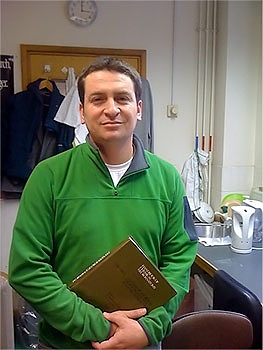
Cristian joins the Bolam lab for about 3 months. He was born in Santiago de Chile. After the school, he studied aeronautic electronics in the Chilean Airforce Academy. In 1997 he left the airforce and worked in Lan Chile Airlines as an avionics specialist, team leader and supervisor. During this time his interest changed dramatically and in the 2004 began undergraduate studies in the University of Chile, in the Faculty of Science finishing my studies of Molecular Biotechnology Engineer in 2008. In 2009, in the same University and Faculty he started his graduate studies in the Molecular Biology and Neurosciences Doctoral program. He is now working on his doctoral thesis, which is related to the visual attentional capture mechanisms in birds. He will carry out electron microscopic analyses during his stay in Oxford.
- Unit16 Dec 2011

The Unit held its biannual Science Day on Friday 16th December 2011. Presentations featured ongoing projects and future proposals. List of attendees. Programme.
- Unit14 Dec 2011
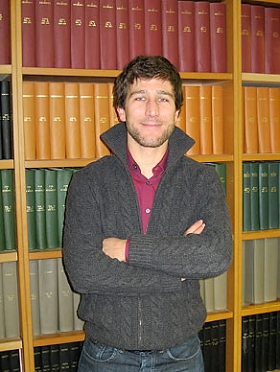
After graduating in Physics at the University of Madrid in 2004, Álvaro Tejero-Cantero moved to the University of Munich (LMU) to complete a Masters Thesis (Hons.) on Quantum Entanglement at the Arnold Sommerfield Center for Theoretical Physics. He went on to work for two years as a professional: first at the German Aerospace Centre, where he managed an European FP6 research network and developed forecasts of air traffic for climate models, and later, as a Software Engineer for astronomical metadata at the European Southern Observatory.
For his PhD, started in 2008 at the Computational Neuroscience group of Prof. C. Leibold (Graduate School for Systemic Neuroscience and LMU Munich), he investigated how inhibition and excitation to hippocampal pyramidal cells intertwine during ripples in vitro and extended a theoretical model to assess how feedback inhibition improves the capacity of the brain for sequences of memories. Álvaro joins the group of Dr. D. Dupret where he will be studying how circuit dynamics in the hippocampal formation contribute to the processing of mnemonic information.
- Unit28 Nov 2011

We are pleased to welcome Rong Xian (Kristie) Chia for a short visit to Professor Peter Somogyi's lab. Kristie is currently studying for a Bachelor of Medical Science at the Australian National University, Canberra. She hopes to extend her research skills and gain insight into cortical neuronal networks.
- Unit7 Nov 2011
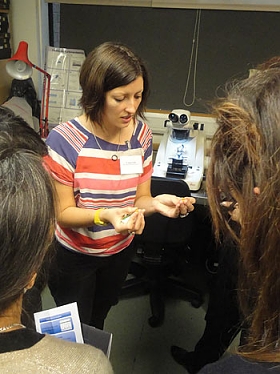
On Monday 7th November the Basal Ganglia labs were visited by a class of graduate art students studying a Masters level course in Art and Science, at Central Saint Martins College of Art and Design (University of the Arts London). These artists are interested in using science as an influence in their art practice.
A valuable component of the newly established research-based Masters course is the opportunity for artists to be exposed to and engage with scientists in various settings, including the laboratory. To demonstrate what a biomedical research lab is like, members of the Basal Ganglia lab shared with the group our research themes, techniques, equipment and experiences of being scientific researchers, through discussions and lab demonstrations.
Feedback was positive all round, with lots of interesting questions asked. While the artists appreciated the often beautiful imagery produced through our investigations, they were also fascinated by the information we can obtain through microscopic analyses and the craftsmanship involved in a lot of the meticulous preparation that goes into our lab work.
It is anticipated that a sub-group of these artists will continue to work with individuals in the Unit in a sustained collaboration, to develop outcomes relating to neuroscience and work done in the lab. This will hopefully lead to a public exhibition next year. Watch this space.
- Unit26 Oct 2011
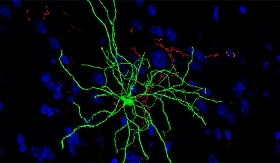
'Differential modulation of excitatory and inhibitory striatal synaptic transmission by histamine', an article published today in the Journal of Neuroscience, and highlighted in 'This Week in the Journal'.
Authors: Tommas J. Ellender, Icnelia Huerta-Ocampo, Karl Deisseroth, Marco Capogna & J. Paul Bolam.
Abstract:Information processing in the striatum is critical for basal ganglia function and strongly influenced by neuromodulators (e.g., dopamine). The striatum also receives modulatory afferents from the histaminergic neurons in the hypothalamus which exhibit a distinct diurnal rhythm with high activity during wakefulness, and little or no activity during sleep. In view of the fact that the striatum also expresses a high density of histamine receptors, we hypothesized that released histamine will affect striatal function. We studied the role of histamine on striatal microcircuit function by performing whole-cell patch-clamp recordings of neurochemically identified striatal neurons combined with electrical and optogenetic stimulation of striatal afferents in mouse brain slices. Bath applied histamine had many effects on striatal microcircuits. Histamine, acting at H2 receptors, depolarized both the direct and indirect pathway medium spiny projection neurons (MSNs). Excitatory, glutamatergic input to both classes of MSNs from both the cortex and thalamus was negatively modulated by histamine acting at presynaptic H3 receptors. The dynamics of thalamostriatal, but not corticostriatal, synapses were modulated by histamine leading to a facilitation of thalamic input. Furthermore, local inhibitory input to both classes of MSNs was negatively modulated by histamine. Subsequent dual whole-cell patch-clamp recordings of connected pairs of striatal neurons revealed that only lateral inhibition between MSNs is negatively modulated, whereas feedforward inhibition from fast-spiking GABAergic interneurons onto MSNs is unaffected by histamine. These findings suggest that the diurnal rhythm of histamine release entrains striatal function which, during wakefulness, is dominated by feedforward inhibition and a suppression of excitatory drive.
- Unit6 Oct 2011
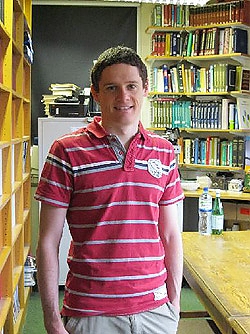
Colin McNamara graduated from the University of Limerick in 2006 with a BEng (Hons) in Computer Engineering. After graduation he worked as a hardware and software development engineer for the high performance signal processing integrated circuit company Analog Devices. In 2011 he completed an MSc in Neuroscience at the University of Oxford. This included two research projects. The first project investigated dendritic spine morphology in organotypic slice cultures of rat hippocampi (Dr Nigel Emptage's group, Department of Pharmacology). The second investigated the neuronal underpinning of pitch perception using multi-electrode extra cellular recordings from ferret auditory cortex (Prof Andy King's lab, Department of Physiology, Anatomy and Genetics).Colin joined the unit as a member of Dr David Dupret's group in October 2011. For his DPhil he is studying hippocampal network activity associated with learning processes by means of large-scale extracellular recording techniques.
- Unit6 Oct 2011
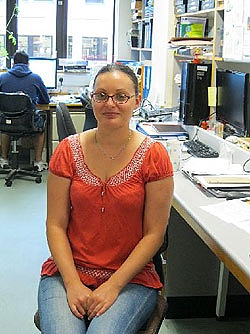
Maria joins the Bolam lab to study for her DPhil. She graduated from the University of Birmingham with a BMedSc in Medical Neuroscience. Her final year project focussed on gamma oscillations in a mouse model of mental retardation.
- Unit3 Oct 2011
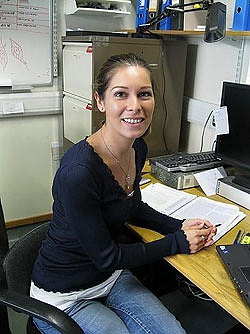
Federica Vinciati has joined the Unit as a D.Phil. student, and will work in the group of Pete Magill. The overall aim of Federica's thesis research is to elucidate the cell-type-specific contributions of striatal neurons to abnormal network activity in Parkinsonism. Federica comes to us from the University of Trieste, where her past research was focussed on the use of transcranial magnetic stimulation in humans to define the role of parietal cortex in the planning of reaching movements.